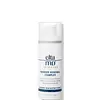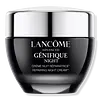What's inside
What's inside
 Key Ingredients
Key Ingredients

 Benefits
Benefits

 Concerns
Concerns

 Ingredients Side-by-side
Ingredients Side-by-side

Water
Skin ConditioningEthylhexyl Isononanoate
EmollientNiacinamide
SmoothingGlycerin
HumectantGlyceryl Stearate
EmollientPEG-100 Stearate
Dimethicone
EmollientCeramide NP
Skin ConditioningCholesterol
EmollientCeramide Eos
Skin ConditioningCetyl Alcohol
EmollientCeramide Ns
Skin ConditioningCeteareth-25
CleansingCeramide EOP
Skin ConditioningCaprooyl Sphingosine
Skin ConditioningCaprooyl Phytosphingosine
Skin ConditioningCeramide AP
Skin ConditioningHyaluronic Acid
HumectantHydroxyethyl Acrylate/Sodium Acryloyldimethyl Taurate Copolymer
Emulsion StabilisingXylitylglucoside
HumectantSqualane
EmollientAnhydroxylitol
HumectantPEG-7 Trimethylolpropane Coconut Ether
EmulsifyingPolyisobutene
Piptadenia Colubrina Peel Extract
HumectantActinidia Chinensis Fruit Extract
EmollientBromelain
Skin ConditioningTocopherol
AntioxidantXylitol
HumectantFicin
Skin ConditioningGlutamine
Skin ConditioningBiotin
AntiseborrhoeicProline
Skin ConditioningBehenic Acid
CleansingCarbomer
Emulsion StabilisingCitric Acid
BufferingSodium Hydroxide
BufferingButylene Glycol
HumectantBenzyl Alcohol
PerfumingPotassium Sorbate
PreservativePhenoxyethanol
PreservativeHexadecane
PerfumingSodium Bisulfite
AntioxidantDisodium EDTA
Water, Ethylhexyl Isononanoate, Niacinamide, Glycerin, Glyceryl Stearate, PEG-100 Stearate, Dimethicone, Ceramide NP, Cholesterol, Ceramide Eos, Cetyl Alcohol, Ceramide Ns, Ceteareth-25, Ceramide EOP, Caprooyl Sphingosine, Caprooyl Phytosphingosine, Ceramide AP, Hyaluronic Acid, Hydroxyethyl Acrylate/Sodium Acryloyldimethyl Taurate Copolymer, Xylitylglucoside, Squalane, Anhydroxylitol, PEG-7 Trimethylolpropane Coconut Ether, Polyisobutene, Piptadenia Colubrina Peel Extract, Actinidia Chinensis Fruit Extract, Bromelain, Tocopherol, Xylitol, Ficin, Glutamine, Biotin, Proline, Behenic Acid, Carbomer, Citric Acid, Sodium Hydroxide, Butylene Glycol, Benzyl Alcohol, Potassium Sorbate, Phenoxyethanol, Hexadecane, Sodium Bisulfite, Disodium EDTA
Water
Skin ConditioningBifida Ferment Lysate
Skin ConditioningGlycerin
HumectantDicaprylyl Ether
EmollientPentylene Glycol
Skin ConditioningPolyglyceryl-6 Distearate
EmulsifyingPropanediol
SolventCetyl Esters
EmollientJojoba Esters
EmollientAmmonium Polyacryloyldimethyl Taurate
Emulsion StabilisingBehenyl Alcohol
EmollientOctyldodecanol
EmollientAcacia Decurrens Flower Cera
EmollientHelianthus Annuus Seed Cera
EmollientHelianthus Annuus Seed Oil
EmollientPolymnia Sonchifolia Root Juice
Skin ConditioningCeramide NP
Skin ConditioningAlpha-Glucan Oligosaccharide
CleansingSodium Hyaluronate
HumectantSodium Hydroxide
BufferingSodium Stearoyl Glutamate
CleansingSalicyloyl Phytosphingosine
Skin Conditioning2-Oleamido-1,3-Octadecanediol
Skin ConditioningAdenosine
Skin ConditioningMannose
HumectantCoco-Caprylate/Caprate
EmollientAscorbyl Glucoside
AntioxidantHydroxyacetophenone
AntioxidantHydroxypalmitoyl Sphinganine
Skin ConditioningHydroxypropyl Starch Phosphate
Capryloyl Salicylic Acid
ExfoliatingTrisodium Ethylenediamine Disuccinate
Lactic Acid
BufferingLactobacillus
Skin ConditioningAcetic Acid
BufferingMaltodextrin
AbsorbentFaex Extract
Skin ConditioningPolyglycerin-3
HumectantPolyglyceryl-3 Beeswax
EmulsifyingCetyl Alcohol
EmollientTocopherol
AntioxidantSodium Benzoate
MaskingLinalool
PerfumingLimonene
PerfumingCitronellol
PerfumingParfum
MaskingWater, Bifida Ferment Lysate, Glycerin, Dicaprylyl Ether, Pentylene Glycol, Polyglyceryl-6 Distearate, Propanediol, Cetyl Esters, Jojoba Esters, Ammonium Polyacryloyldimethyl Taurate, Behenyl Alcohol, Octyldodecanol, Acacia Decurrens Flower Cera, Helianthus Annuus Seed Cera, Helianthus Annuus Seed Oil, Polymnia Sonchifolia Root Juice, Ceramide NP, Alpha-Glucan Oligosaccharide, Sodium Hyaluronate, Sodium Hydroxide, Sodium Stearoyl Glutamate, Salicyloyl Phytosphingosine, 2-Oleamido-1,3-Octadecanediol, Adenosine, Mannose, Coco-Caprylate/Caprate, Ascorbyl Glucoside, Hydroxyacetophenone, Hydroxypalmitoyl Sphinganine, Hydroxypropyl Starch Phosphate, Capryloyl Salicylic Acid, Trisodium Ethylenediamine Disuccinate, Lactic Acid, Lactobacillus, Acetic Acid, Maltodextrin, Faex Extract, Polyglycerin-3, Polyglyceryl-3 Beeswax, Cetyl Alcohol, Tocopherol, Sodium Benzoate, Linalool, Limonene, Citronellol, Parfum
Ingredients Explained
These ingredients are found in both products.
Ingredients higher up in an ingredient list are typically present in a larger amount.
Ceramide NP is a type of ceramide and formally known as ceramide 3.
Ceramides are intercellular lipids naturally found in our skin that bonds dead skin cells together to create a barrier. They are known for their ability to hold water and thus are a great ingredient for dry skin.
Ceramides are an important building block for our skin barrier. A stronger barrier helps the skin look more firm and hydrated. By bolstering the skin ceramides act as a barrier against irritating ingredients. This can help with inflammation as well.
If you would like to eat ceramides, sweet potatoes contain a small amount.
Read more about other common types of ceramides here:
Ceramide AP
Ceramide EOP
Cetyl Alcohol is a fatty alcohol. Fatty Alcohols are most often used as an emollient or to thicken a product.
Its main roles are:
Though it has "alcohol" in the name, it is not related to denatured alcohol or ethyl alcohol.
The FDA allows products labeled "alcohol-free" to have fatty alcohols.
Learn more about Cetyl AlcoholGlycerin is already naturally found in your skin. It helps moisturize and protect your skin.
A study from 2016 found glycerin to be more effective as a humectant than AHAs and hyaluronic acid.
As a humectant, it helps the skin stay hydrated by pulling moisture to your skin. The low molecular weight of glycerin allows it to pull moisture into the deeper layers of your skin.
Hydrated skin improves your skin barrier; Your skin barrier helps protect against irritants and bacteria.
Glycerin has also been found to have antimicrobial and antiviral properties. Due to these properties, glycerin is often used in wound and burn treatments.
In cosmetics, glycerin is usually derived from plants such as soybean or palm. However, it can also be sourced from animals, such as tallow or animal fat.
This ingredient is organic, colorless, odorless, and non-toxic.
Glycerin is the name for this ingredient in American English. British English uses Glycerol/Glycerine.
Learn more about GlycerinSodium Hydroxide is also known as lye or caustic soda. It is used to adjust the pH of products; many ingredients require a specific pH to be effective.
In small amounts, sodium hydroxide is considered safe to use. However, large amounts may cause chemical burns due to its high alkaline.
Your skin has a natural pH and acid mantle. This acid mantle helps prevent harmful bacteria from breaking through. The acid mantle also helps keep your skin hydrated.
"Alkaline" refers to a high pH level. A low pH level would be considered acidic.
Learn more about Sodium HydroxideTocopherol (also known as Vitamin E) is a common antioxidant used to help protect the skin from free-radicals and strengthen the skin barrier. It's also fat soluble - this means our skin is great at absorbing it.
Vitamin E also helps keep your natural skin lipids healthy. Your lipid skin barrier naturally consists of lipids, ceramides, and fatty acids. Vitamin E offers extra protection for your skin’s lipid barrier, keeping your skin healthy and nourished.
Another benefit is a bit of UV protection. Vitamin E helps reduce the damage caused by UVB rays. (It should not replace your sunscreen). Combining it with Vitamin C can decrease sunburned cells and hyperpigmentation after UV exposure.
You might have noticed Vitamin E + C often paired together. This is because it is great at stabilizing Vitamin C. Using the two together helps increase the effectiveness of both ingredients.
There are often claims that Vitamin E can reduce/prevent scarring, but these claims haven't been confirmed by scientific research.
Learn more about TocopherolWater. It's the most common cosmetic ingredient of all. You'll usually see it at the top of ingredient lists, meaning that it makes up the largest part of the product.
So why is it so popular? Water most often acts as a solvent - this means that it helps dissolve other ingredients into the formulation.
You'll also recognize water as that liquid we all need to stay alive. If you see this, drink a glass of water. Stay hydrated!
Learn more about Water